Shares of Amazon, the third-largest contributor to the S&P 500, fell over 10% on Friday. A poor earnings report is the culprit. Amazon announced a quarterly loss of $3.8 billion due to a $7.6 billion loss due to its holdings of Rivian (EV automaker). Excluding Rivian, Amazon’s results were fair. However, fair doesn’t always cut it with stocks that trade at high valuations, like Amazon. Sales grew by 7%, while solid, it is below the inflation rate. Further, 7% is the slowest annual growth rate in the company’s history. The largest contributor to sales, online stores, fell short of expectations. However, its AWS services continue to see strong growth at 34%. That said, its AWS growth rate is slipping behind Google and Microsoft. Unlike most companies buying back their stock, Amazon is a net issuer of stock. Amazon shares are now down about 33% from last year’s highs.
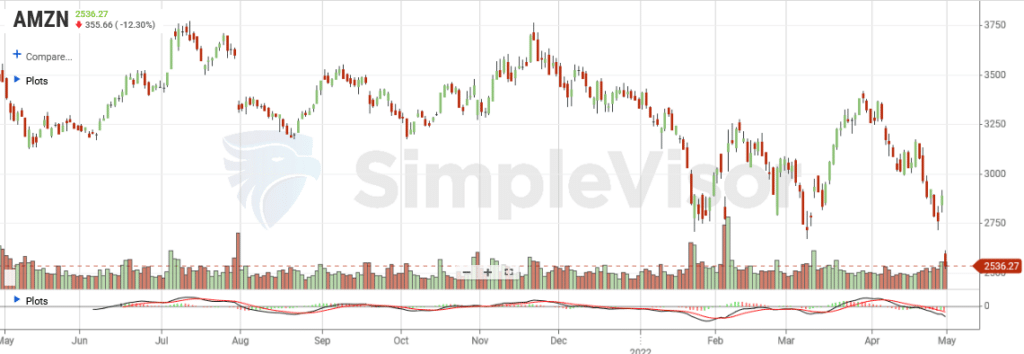

What To Watch Today
Economy
- 8:30 a.m. ET: Housing starts, January (1.695 million expected, 1.702 million in December)
- 8:30 a.m. ET: Housing starts, month-over-month, January (-0.4% expected, 1.4% in December)
- 8:30 a.m. ET: Building permits, January (1.750 million expected, 1.873 million in December, upwardly revised to 1.885 million)
- 8:30 a.m. ET: Building permits, month-over-month, January (-7.2% expected, 9.1% in December, upwardly revised to 9.8%)
- 8:30 a.m. ET: Initial jobless claims, week ended Feb. 12 (218,000 expected, 223,000 during prior week)
- 8:30 a.m. ET: Continuing claims, week ended Feb. 5 (1.605 million during prior week)
- 8:30 a.m. ET: Philadelphia Fed Business Outlook Index, February (20.0 expected, 23.2 in January)
Earnings
Pre-market
- Walmart (WMT) to report adjusted earnings of $1.51 on revenue of $151.68 billion
- US Foods (USFD) to report adjusted earnings of $0.40 on revenue of $7.64 billion
- Palantir Technologies (PLTR) to report adjusted earnings of $0.03 on revenue of $419.33 million
- AutoNation (AN) to report adjusted earnings of $5.00 on revenue of $6.37 billion
Post-market
- Shake Shack (SHAK) to report an adjusted loss of $0.17 on revenue of $202.60 million
- Roku (ROKU) to report adjusted earnings of $0.04 on revenue of $893.13 million
- Dropbox (DBX) to report adjusted earnings of $0.37 on revenue of $558.33 billion
Market Trading Update
Stocks looks set to trade higher on the first day of May following a brutal April selloff. Will “April showers bring May flowers?” With the stock buyback blackout period over, the question will be whether that will be enough to lift indices higher.
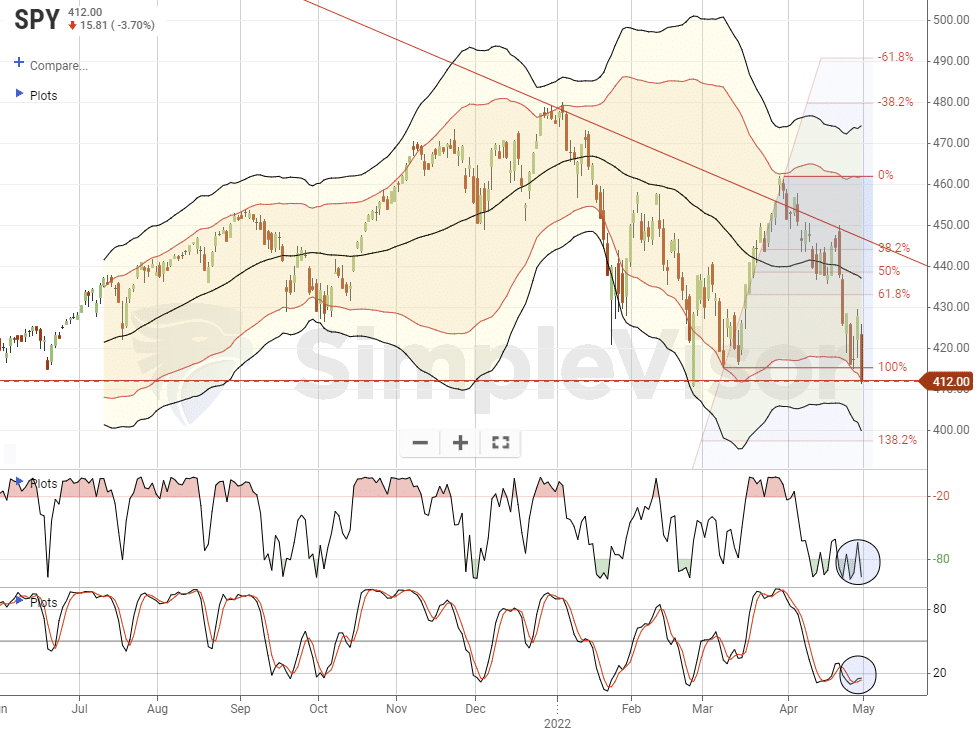
It is also essential to keep some perspective at this juncture. Yes, the S&P is down roughly 12% year-to-date and is one of the roughest yearly starts since 1970. However, don’t forget the 26% gain in 2021.
As we have noted previously, the good news, if you want to call it that, is that investors are so bearish it’s bullish. The percentage of bullish investors is currently 16% and close to a record low, leaving the bull/bear spread at -43%, a level surpassed only twice in the past 35 years. Tom Lee of Fundstrat shows that the returns following such sentiment lows tend to be good.
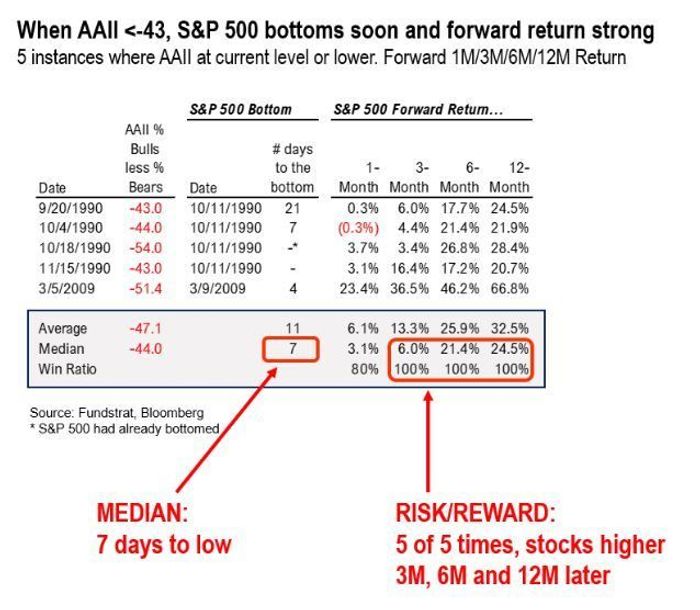
The Week Ahead
This will be a big week for economic data, earnings, and the Federal Reserve. On the economic front, the ISM report today will provide a glimpse at the manufacturing sector in April. Expectations are for a slight decline, but the prices index is expected to rise further. JOLTs- job openings will be released Tuesday, followed by ADP jobs on Wednesday and the BLS Jobs report on Friday. The current estimate for the BLS is for a gain of 415k jobs, similar to the 431k from March. We will start paying closer attention to the weekly jobless claims data to see if the extremely tight labor market is beginning to ease with the economy slowing.
The Fed will release its FOMC monetary policy statement at 1 pm EST on Wednesday. They are expected to raise rates by 50bps and announce a schedule to begin QT in May or June. The market appears braced for very hawkish commentary from the Fed and Jerome Powell. As such, the odds of shocking the markets are less than in the prior few meetings.
Corporate earnings releases will continue at a good pace; however, many of the largest companies and market movers have already reported.

Did We Go Through A Major Bear Market?
Lance Roberts asked that question in the April 22nd newsletter. The graph below shares some more evidence to show that while the major indexes are not in bear markets, many stocks beneath the surface are. As shown below, the only comparisons to the percentage of significant drawdowns in the NASDAQ is from the bear markets of – 2000-2003, 2008-2009, and early 2020.
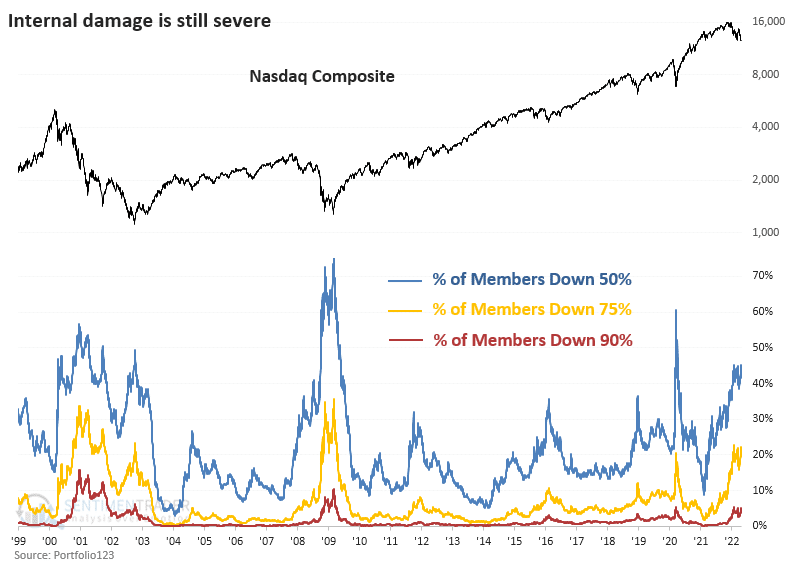
Amazon’s Jobs Outlook
Within Amazon’s quarterly earnings executive outlook was the following interesting tidbit: “Today, as we are no longer chasing physical or staffing capacity, our teams are squarely focused on improving productivity and cost efficiencies throughout our fulfillment network.”
Essentially Amazon tells us they are no longer facing hurdles in fully staffing their facilities. This statement and those from other companies might be an early indication the labor market is loosening. Apple mentioned that it would fire some Genius Bar workers and retract offers to others. In Ford’s earnings commentary, they noted they would lay off 580 workers. While the number of layoffs we note is small, it does potentially speak to a change in the employment trends of the last nine months. BLS and ADP employment next week will shed more light on any weakening in the jobs market. The week after, JOLTS will illuminate us on job openings. Typically, the job market starts weakening before a recession occurs, as shown below. It is early, but the instances noted above are the first signs of said weakening.
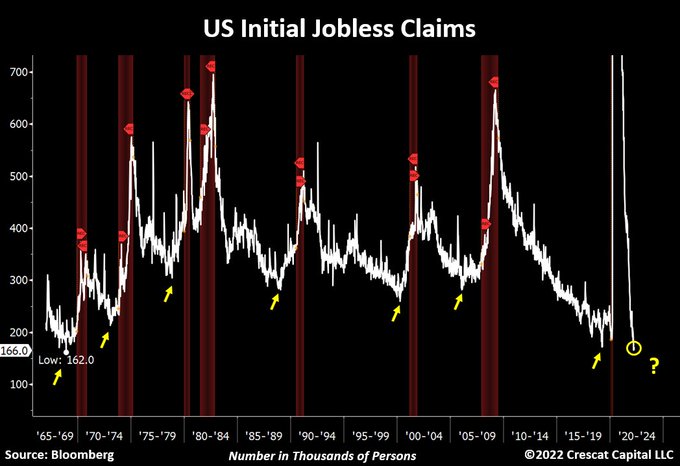
Cancel Culture
President Biden has a big decision on his hands: what to do about student loans. Biden is under mounting pressure from his party to forgive or cancel billions, or even trillions, of dollars worth of student loans — a debt that in 2003 was roughly one-third the size of credit card debt, but has ballooned to be almost twice as big in less than 20 years.
So far borrowers have been given a pass for much of the pandemic, with payments (and crucially interest on the loans) having been paused for more than 2 years. The latest pause on payments is set to last until August 31st.
Biden has ruled out the $50k per person forgiveness some are calling for, yesterday saying that he would reach a decision on student debt “within a month”. – Chartr
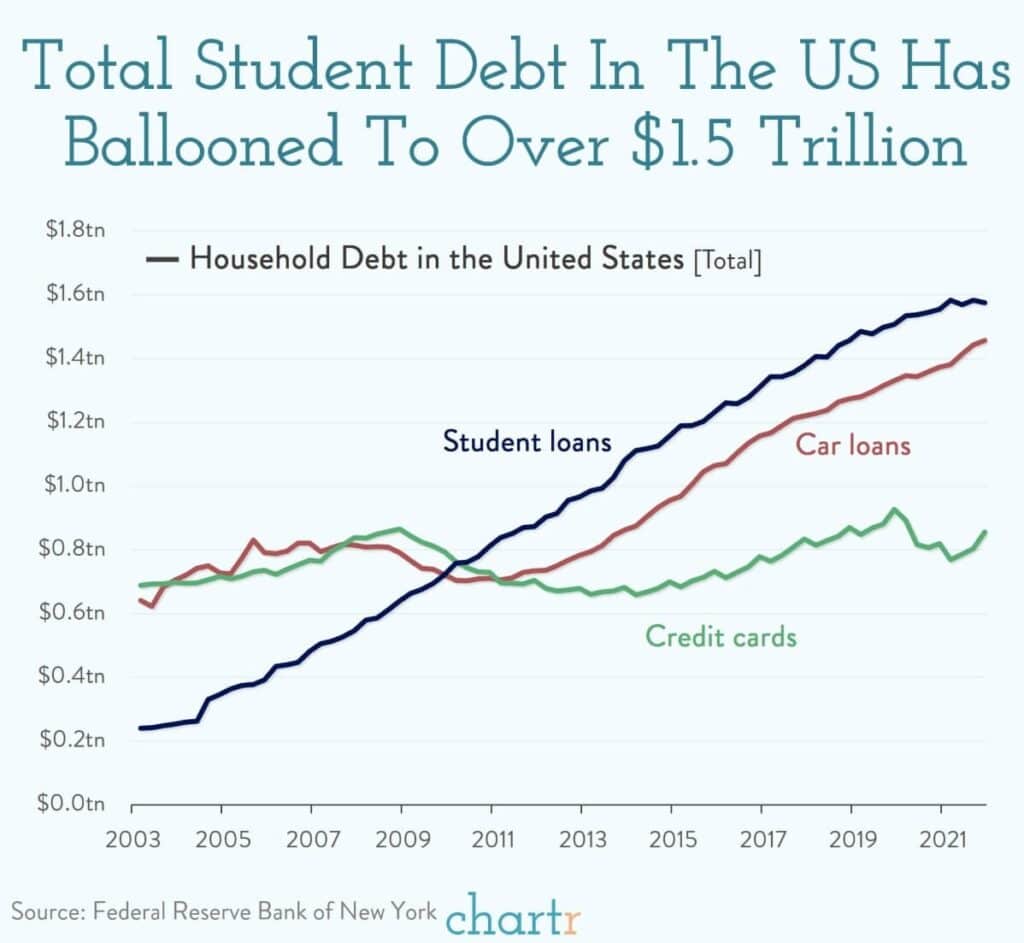
The issue of canceling debt is fraught with unintended consequences.
- What about those that paid off their debts as per their obligation? Do they get a refund?
- What about the “rule of law.” No one was forced to take out student loan debt and use it for just about everything other than education. Should those that took the lending risk get penalized?
- If you cancel the debt today, what about future borrowers. Does every student loan in the future come with an automatic “cancellation policy?”
- Individuals were sent money but instead of paying down their debt, they gambled on stocks.
- What happened to personal responsibility?
You get the idea.
How Big Is Technology?
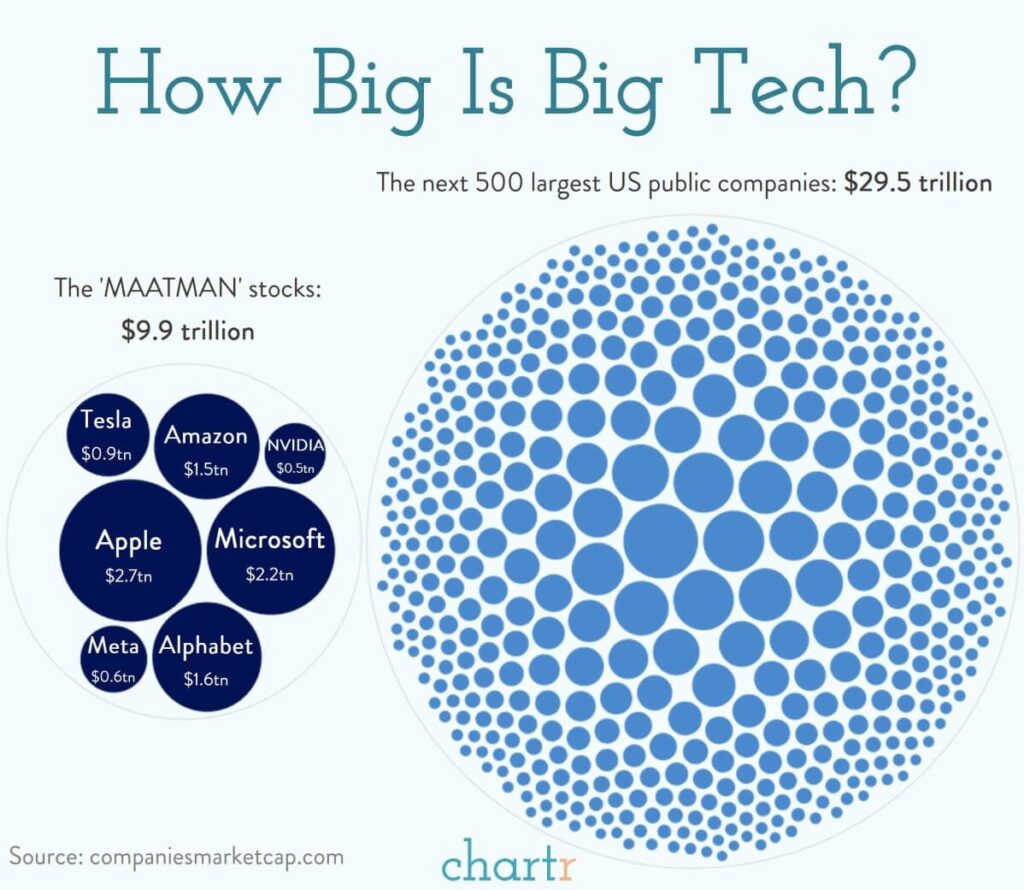
As of yesterday the 7 stocks that make up our newest big tech acronym — MAATMAN* — had shed almost $2.1 trillion of equity value since the start of the year (Amazon is losing another ~$150bn at the time of writing). That’s a loss in value that would have been unthinkable for 7 stocks to lose even just a few years ago — but even with that loss it’s worth reminding ourselves just how big tech still is: – Chartr
- Apple alone is worth 9x Coca-Cola, 14x Nike, 25x Target, 30x Netflix or 42x Uber.
- Meta has lost the approximate value of a JPMorgan Chase or 8 Twitters, just this year.
- Tesla remains more valuable than the next 15 automakers in the world… combined.
The Fed’s Inflation Gauge
The Fed’s preferred inflation gauge (PCE) shows some signs that inflation may be peaking. The year-over-year PCE hit a 40-year high of 6.6%. While at a very high level, it was below the consensus of a 6.9% increase. The core PCE, excluding food and energy, came in below expectations and last month’s reading at 5.2%. The core illustrates that a good chunk of inflation in March was due to food and energy prices.
We doubt the Fed will take much solace in the PCE data, but when considered along with negative Q1 GDP, the Fed may adopt a slightly more dovish tone than we have recently seen from many members.
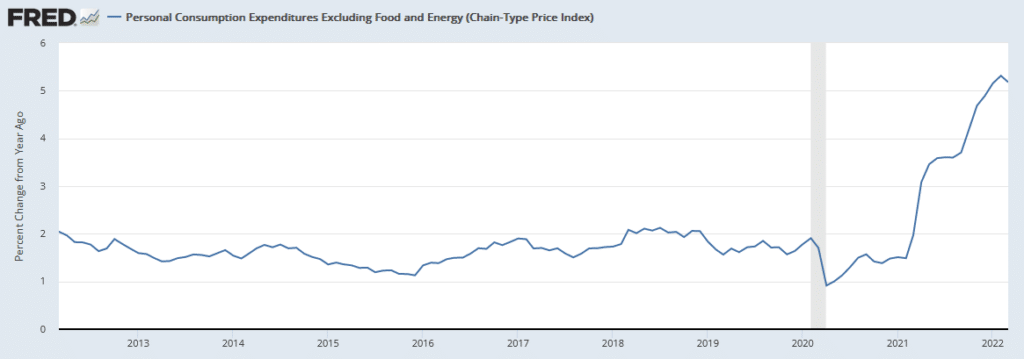
Please subscribe to the daily commentary to receive these updates every morning before the opening bell.
If you found this blog useful, please send it to someone else, share it on social media, or contact us to set up a meeting.
Also Read

















